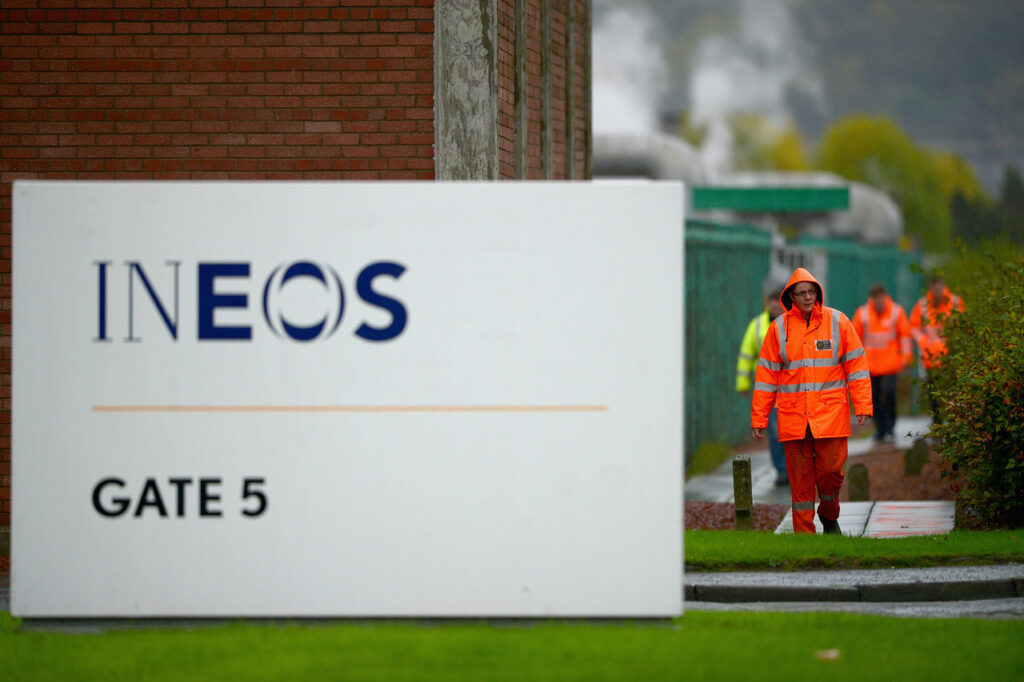
The U.S. is surging into global leadership in petroleum production, surpassing Saudi Arabia. At the same time, America’s greenhouse-gas emissions are declining and U.S. energy costs are the envy of the industrialized world. These astonishing developments have been made possible by the U.S.-pioneered techniques of horizontal drilling and hydraulic-fracturing, better known as “fracking.”
James Ratcliffe, the British billionaire and CEO of the European petrochemical giant Ineos, has taken notice. He wants to launch fracking in the United Kingdom with his company in the lead. Last month Mr. Ratcliffe announced a bold offer to his countrymen: Ineos will pay 4% royalties to landowners plus 2% royalties to municipalities on fracking revenue, far more than currently offered by developers. Mr. Ratcliffe means to spark an American-style fracking revolution.
On the strength of fracking, U.S. petroleum production (oil and liquid gas) has surged over the past decade to 11.5 million barrels a day from 7.3 million, according to the International Energy Agency. Additionally, U.S. natural-gas production has increased 30%, leading to a doubling in natural gas-fired power generation to about 27% of total generation, replacing coal nearly megawatt for megawatt. Since natural gas-fired power generation emits only half the greenhouse gases as coal-fired, fracking is a significant contributor to the roughly 7% decline in U.S. carbon-dioxide emissions over the last decade.
The U.K. is headed in the opposite direction—a big decline in oil and gas production from its North Sea fields. Britain faces somewhat of a crisis, since natural gas fires about 40% of power generation and oil about 30% with coal and nuclear accounting for most of the rest (the U.S. has virtually no oil-fired power generation). Not surprisingly, U.K. petroleum imports are increasing rapidly and the nation is embarking upon a crash program to convert to other fuels.
And that brings us to Drax, the ominous sounding name of a monstrous power station in York that supplies 7% of the U.K.’s power. Drax is converting from coal to biomass fuel, providing a good look at whether “green energy” offers a realistic alternative to natural gas. Drax is converting to wood pellets, specifically, wood pellets mostly imported from the southern U.S. (Beware, Southern conservationists.) Since imported wood pellets cost three times local coal, the British government is allowing Drax to charge twice the average going rate for electricity. That’s hardly going to spur economic growth.
The conversion has many skeptics on environmental grounds as well. The British government’s own Department of Energy and Climate Change issued a report in July stating that “it may be possible to meet” targeted lower emissions levels by converting to wood pellets, but the conversion “could lead to high greenhouse gas intensities, e.g. greater than electricity from coal.”
Use of wood as biomass fuel involves a highly uncertain environmental impact whereas the impact of natural gas is quite predictable and beneficial. As observed by the International Energy Agency, “Natural Gas is seen as a good source of electricity supply for a number of economic, operational and environmental reasons: it is low-risk (technically and financially), lower carbon relative to other fossil fuels, and gas plants can be built relatively quickly in around two years.”
Green energy power generation represents only niche operations in both the U.S. and the U.K. The most significant green source in America, wind power, delivers only 4% of electric power. In general, green power generation is not scalable, or, at least to date, it hasn’t been scaled.
So, is it any wonder that Mr. Ratcliffe has seized upon fracking as the U.K.’s only realistic option to meet the three goals of delivering power in scale volume, at reasonable expense and on a reduced greenhouse gas emissions basis?
But what about the public health and safety concerns? Hydraulic fracturing, as its name suggests, uses water mixed with sand and chemicals, some toxic, to help remove the natural gas or oil from shale formations. Groundwater contamination has been found at some U.S. drilling sites, but environmentalists and industry experts are at odds about the risks posed to groundwater and aquifers near drilling sites.
If, out of total risk aversion, we were to shut down all fracking operations in the U.S. tomorrow, the primary alternative would be continued heavy reliance on coal, which still accounts for almost 40% of power generated in the U.S. and entails significant public health risks, aside from climate change. According to the Environmental Defense Fund, “Coal-fired power plants are the primary source of toxic mercury air emissions in the U.S. Mercury pollution contaminates our land and waters, causing serious human health impacts.” Many of these plants are near U.S. urban centers, according to the EDF. In contrast, most fracking is carried out in sparsely populated rural locations.
On virtually all counts, the case in the immediate and intermediate term favors fracking and fracked natural gas over green-energy sources, even allowing for some groundwater contamination and ground-level air pollution, which is declining as drillers—and regulators—gain more knowledge and expertise. For example, Colorado has passed regulations aimed at reducing gas emissions at the wellhead with the support of the four largest drillers in the state. One, Encana Corp., has already implemented Colorado-style compliance in its operations in Wyoming, which has no such regulations. No doubt, even more can be done.
Americans may be taking for granted their great good fortune and dramatic comeback in energy—especially when compared with the U.K.’s predicament—and ignoring that fracking is the driving force behind it. Mr. Ratcliffe’s proposal should serve to highlight and validate the benefits of fracking. Sometimes it is only when someone else wants what you have that you realize its value.
As appeared in The Wall Street Journal on Oct. 12, 2014.
![]()
Red Jahncke is a nationally recognized columnist, who writes about politics and policy. His columns appear in numerous national publications, such as The Wall Street Journal, Bloomberg, USA Today, The Hill, Issues & Insights and National Review as well as many Connecticut newspapers.


